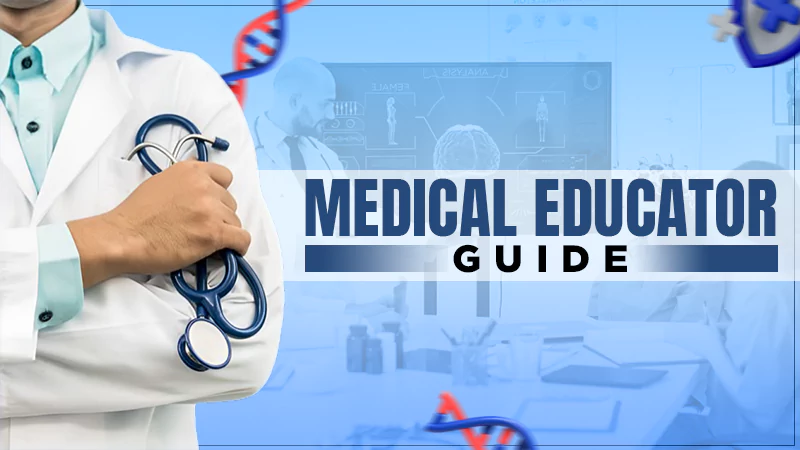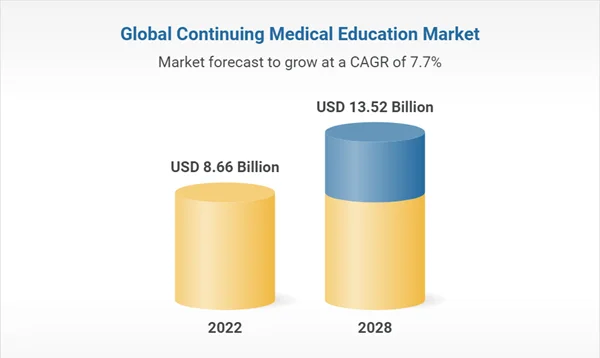
In the last few years, the healthcare industry has seen drastic changes. With the progress of the health sector, more and more people are chasing their careers in medicine.
Education in medicine implies the process of learning via modified knowledge from medical educators to the students in medical schools. Therefore, the demand for such instructors has been constantly increasing.
The path to a career as a medical educator is a noble pursuit. Teachers need to adopt holistic approaches to enhance the quality of teaching methods for students’ academic performance and career development.
By including CPR training as part of their medical education, future medical educators can equip their students with essential life-saving skills that can make a critical difference in emergency situations.
This article is intended to advise aspiring medical educators who want to change from clinical practice to the field of education. Each step elaborates vital points, from understanding prerequisites to the academic complexities that will help an individual become a proficient medical teacher.
Cultivating Expertise in Your Field

The Bureau of Labor Statistics highlights that there is a projected 7 percent growth in employment for health education specialists from 2022 to 2032. This exceeds the average for all occupations.
On average, around 6,600 openings for these specialists are anticipated each year over the decade. Many of these openings are expected to stem from the need to replace workers who shift to different occupations or retire.
Becoming a proficient medical educator starts with a deep cultivation of expertise in your chosen field. Clinical knowledge forms the bedrock upon which effective teaching is built. Immersing oneself in continuous learning, attending conferences, and actively participating in research are integral steps.
By staying abreast of the latest developments and emerging trends, aspiring educators ensure their teaching remains relevant and informed. This commitment to ongoing education enhances personal knowledge that, instills confidence in students who benefit from instructors with a comprehensive understanding of the subject.
Acquiring Educational Credentials

Clinical prowess is fundamental, and acquiring educational credentials is equally vital in the journey to becoming a medical educator. Pursuing advanced degrees or certifications in medical education equips individuals with pedagogical tools, instructional strategies, and an understanding of curriculum development.
These credentials not only validate an educator’s commitment to teaching excellence but also serve as a foundation for effective instructional practices. Institutions often prioritize educators with formal education qualifications, recognizing the value they bring to shaping the educational experiences of future healthcare professionals.
Among the various qualifications, a Doctorate in Education stands out as a transformative choice for those aspiring to enhance teaching skills. The Doctorate in Education (Ed.D.) uniquely prepares medical educators for the challenges of academia.
As stated by Forbes, pursuing an Ed.D. degree typically entails completing 48 to 72 credits of coursework. The duration for earning this degree is commonly within the span of three to four years, encompassing the time needed for dissertation completion.
This advanced degree extends beyond clinical expertise, diving into educational theory, curriculum development, and instructional strategies specific to the medical field.
The below data indicates the increasing growth in the medical education market globally.

Those on this doctoral journey gain a comprehensive understanding of pedagogical principles, refining their ability to design effective learning experiences for diverse student populations.
In the dynamic educational landscape, the availability of remote programs has revolutionized the pursuit of advanced degrees. Accredited universities now recognize the demand for flexibility and accessibility, leading to the introduction of online Doctorate in Education programs.
This evolution caters to the needs of busy professionals, including medical practitioners aspiring to transition into the world of teaching. According to Marymount University, online Doctorate in Education programs offer a unique blend of academic rigor and the convenience of remote learning.
These programs, facilitated by accredited institutions, maintain the same high standards as their traditional counterparts. Aspiring medical educators can now access coursework, engage in discussions, and collaborate on research projects from the comfort of their homes or clinical settings. The integration of technology in these programs aligns with the broader trend of adopting innovative tools in education.
Gaining Teaching Experience
Transitioning from clinical practice to the world of education demands practical experience in teaching. Aspiring medical educators can gain valuable insights by volunteering as guest lecturers, participating in mentoring programs, or taking on teaching assistant roles.
These experiences expose educators to diverse learning styles, challenges, and the dynamics of the student-teacher relationship. Hands-on involvement fosters the development of effective communication skills, adaptability, and a nuanced understanding of the educational process. This sets the stage for a successful career in medical education.
Navigating the Academic Landscape
Understanding the academic landscape is pivotal for a smooth transition into medical education. Aspiring educators should familiarize themselves with the structures of academic institutions, tenure processes, and the expectations for scholarly contributions.
Building professional networks provides insights into institutional cultures and helps individuals align their career goals with the ethos of their chosen educational environment. Navigating this landscape strategically ensures a more seamless integration into the academic community and enhances the chances of long-term success in medical education.
Developing Effective Teaching Strategies
Mastering the art of teaching involves a deliberate focus on developing effective teaching strategies. Beyond the transfer of information, educators must create engaging and interactive knowledge experiences. This includes crafting dynamic lectures, facilitating discussions, and incorporating active learning techniques.
A variety of teaching methods accommodates diverse learning styles, ensuring that students are actively engaged in the education process. Aspiring medical educators should dedicate time to refining these skills, recognizing that an effective teacher goes beyond being knowledgeable. They are adept at imparting knowledge in a way that resonates with their audience.
Technology in Medical Education

In the contemporary landscape, the integration of technology is imperative for effective medical education. Aspiring educators should utilize e-learning platforms, simulation tools, and other technological advancements to enhance the learning experience.
eLearning Industry notes that online education involves various elements such as learning management systems, computer-based simulations, and virtual reality. This field also includes remote teaching, virtual undergraduate and postgraduate programs, and a diverse range of tools and techniques. If an educational approach involves a digital or online aspect, it falls within the category of eLearning.
Incorporating these tools not only caters to the preferences of tech-savvy students but also prepares them for the technology-driven nature of modern healthcare. Integrating technology in education is a dynamic process that requires continuous adaptation to stay current with emerging tools and trends. This ensures that educators remain at the forefront of innovative teaching practices.
Staying Engaged in Professional Development
The journey to becoming a successful medical educator extends beyond initial training. Staying engaged in continuous professional development is necessary for remaining current in the progressing field of medicine.
Did you know?
We give birth to over 200 billion red cells every day.
Attending workshops, and conferences, and engaging in collaborative research projects are avenues for ongoing learning. Also, teachers should actively seek feedback, participate in peer evaluations, and take up opportunities for self-reflection.
A commitment to professional development not only enhances individual growth but contributes to the overall advancement of medical education. This creates a dynamic and enriching environment for both educators and students alike.
Conclusion
The path to becoming a proficient medical educator involves a commitment to continuous learning, blending clinical expertise with advanced educational credentials. Embracing teaching experiences, navigating the academic landscape strategically, and incorporating developing technologies are pivotal steps.
The integration of online education programs offers flexibility without compromising standards, aligning with the dynamic needs of aspiring tutors. Mastering effective teaching strategies and staying engaged in professional development are vital for success.
Ultimately, a holistic approach, emphasizing lifelong learning and adaptability, ensures medical educators contribute significantly to shaping the future of healthcare professionals.